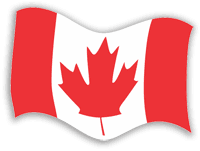|
To an outsider, the structure of the Canadian judiciary is just
as complicated as the legal challenges that it faces every day.
The British North America Act of 1867 granted the federal
government jurisdiction over criminal law but left the provinces
with the primary responsibility for the administration of
justice. So the provinces run the federal courts, but the judges
in those courts are appointed by the federal government.
To confuse matters further, the provinces also have their own
courts, and in this case they appoint the judges themselves.
The final court of appeal in Canada is the Supreme Court. It
replaced Britain’s Judicial Committee of the Privy Council in
1949.
Canada’s policy of appointing judges differentiates us from the
United States where most judges are elected. Critics of the
Canadian process call it undemocratic. In the U.S., they like to
argue, judges are accountable to the people. In Canada, they owe
their allegiance to the political elite.
Supporters of the Canadian approach argue that the appointment
process is better. First, the political elite typically make
their recommendations based on the advice of legal experts, and
this ensures that Canadians receive the best possible treatment
before the law. Second, they note that the permanent
appointments give judges the freedom to interpret the law
without fear of a popular backlash ending their employment after
the next election.
Canadian law also says that judges be well-paid and, thus, not
open to bribery or other efforts to sway their thinking.
The power and prominence of the courts in Canada increased
dramatically in 1982. By creating the Charter of Rights and
Freedoms and putting it in the constitution, the elected
politicians transferred significant responsibilities for
interpreting the law into the hands of the judges. In other
words, Parliament still makes law in Canada, but governments and
members of parliament need to keep the Charter in mind at all
times, and it’s up to the courts to decide if they have.
Admittedly, the Charter includes a “notwithstanding” clause,
allowing federal or provincial parliaments to override the
courts temporarily, but it is rarely invoked.
Critics complain that the Charter has contributed to the decline
of democracy in Canada as judges, who are not elected, can now
overrule the will of the popularly elected members of the House
of Commons. But it is worth recalling that the judiciary never
asked for the Charter. Members of parliament made a conscious
decision to include the Charter when they changed the
Constitution in 1982 and brought it home from Britain.
The role of the courts in Canadian society became particularly
important shortly after the Quebec referendum of 1995. Voters
there had in effect been asked to decide if they wanted to
remain in Canada, and by a very narrow majority decided they
did. The following year, Canada’s attorney general asked the
Supreme Court to comment on the legal implications of any effort
by the province of Quebec to unilaterally leave Canada.
The court concluded that Quebec did not have the right to
declare independence on its own. But, it said, the government of
Canada had an obligation to negotiate if a clear majority of
Quebeckers supported independence. As a result, the federal
government began work to clarify matters.
Passed in 2000, the Clarity Act established the conditions under
which Quebec could negotiate separation from Canada. This was an
example of the new level of dialogue between the democratically
elected legislature and the appointed judiciary in the
development of Canadian public policy.
At about the same time, the creation of the territory of Nunavut
in the Canadian North added something different to the judicial
system. Unlike Canada’s other provincial and territorial courts
which deal with basic cases separate from appeals, the Nunavut
Court of Justice deals with both types of claims.
Another recent addition to the Canadian court system is the
sentencing circle. In some First Nations communities, these
circles advise judges on appropriate punishments for native
peoples who have been declared guilty under the law.
A final and increasingly prominent element of the broader court
system in Canada is the administrative tribunal. These bodies
can deal with controversial issues such as allegations of human
rights violations (although their decisions are still subject to
judicial review). Such tribunals have generated emotional
debates among Canadians over the extent to which governments
should intrude upon the right of individuals to speak their
opinions freely.
Canada’s courts have come a long way since 1867. Today, just as
they have for close to 150 years, they continue to change to
meet new demands.
Further Reading: David E.
Smith, The People’s House of Commons, Ian
reen, The Courts.
Next Instalment: Politics: The Conservative Party
The Canadian Experience is a 52-week history series designed to tell the story of our
country to all Canadians. Sponsored by Multimedia Nova
Corporation and Diversity Media Services/Lingua Ads partners,
the series features articles by our country’s foremost
historians on a wide range of topics. Past articles and author
bios are available at http://www.cdnexperience.ca.
The Canadian Experience is
copyright © 2010-2011 Multimedia Nova Corporation.
|
|
 #12 Canadian Law and
Order: The Courts
#12 Canadian Law and
Order: The Courts
